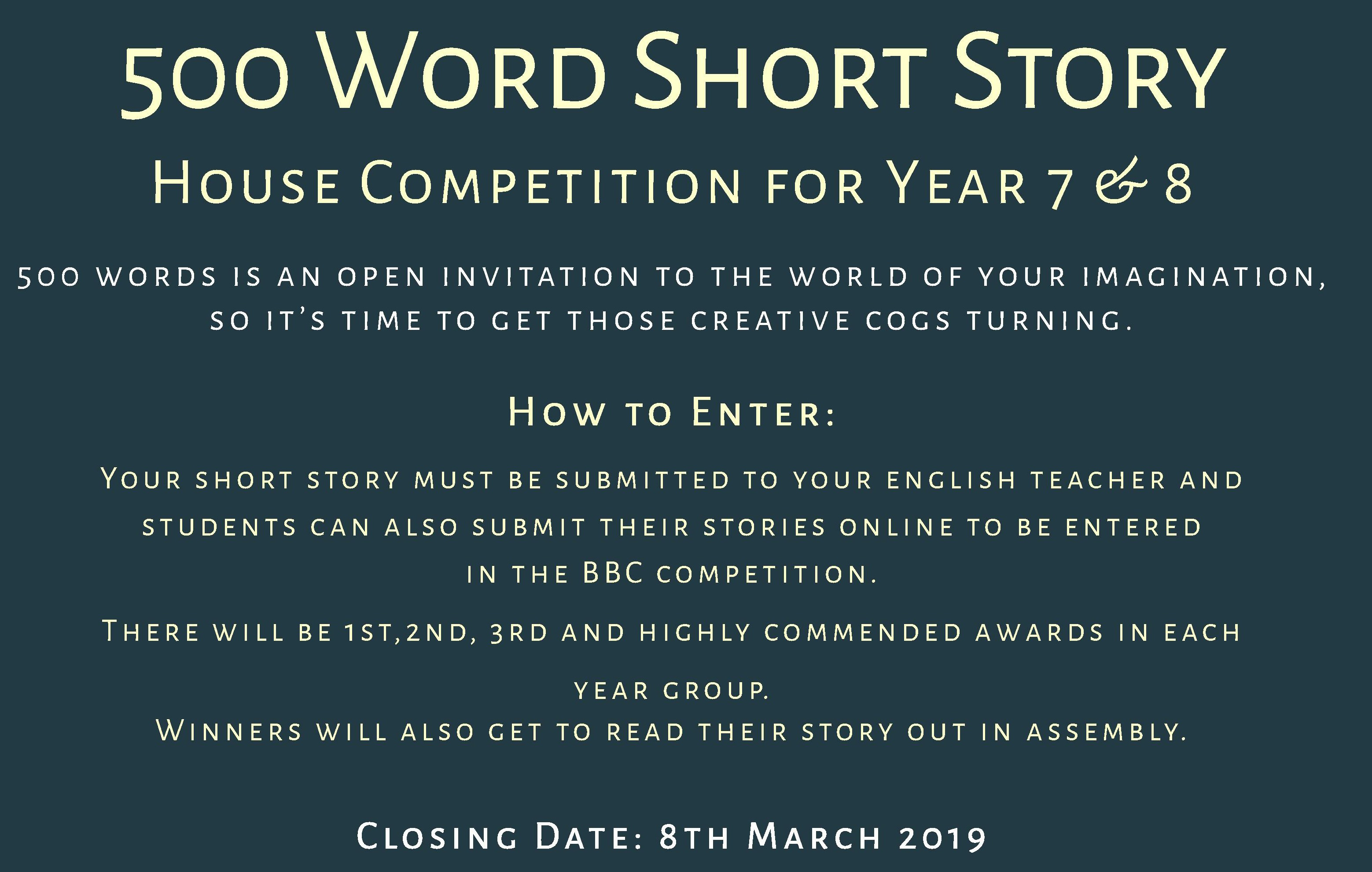Welcome to the realm of storytelling, where words weave worlds and ignite imaginations. In this comprehensive guide, “Story 500 Words,” we embark on an extraordinary journey into the art of crafting captivating tales that resonate with readers’ hearts and minds.
From the fundamental principles of plot structure to the nuances of character development, setting, and theme, we delve deep into the elements that make a story truly unforgettable. With expert insights and compelling examples, this guide empowers you to unlock your storytelling potential and create narratives that captivate and inspire.
Plot Structure
A story’s plot structure is the framework that supports and organizes the narrative. It provides a roadmap for the story’s progression and helps create a coherent and engaging experience for the reader.
The traditional narrative arc, also known as the three-act structure, consists of three main parts:
- Act 1: Exposition– Introduces the characters, setting, and conflict.
- Act 2: Rising Action– Develops the conflict and builds tension.
- Act 3: Falling Action– Resolves the conflict and brings the story to a close.
Many classic stories, such as “The Odyssey” and “Hamlet,” effectively utilize this narrative arc to create compelling and memorable narratives.
Variations and Deviations
While the traditional narrative arc provides a solid foundation, writers often deviate from it to create unique and engaging stories.
- Non-Linear Narratives– Stories that do not follow a chronological order, jumping between different time periods or perspectives.
- Fragmented Narratives– Stories that are told in a disjointed or episodic manner, often through the use of flashbacks or vignettes.
- Circular Narratives– Stories that begin and end at the same point, creating a sense of cyclical time.
These variations allow writers to experiment with storytelling techniques and create narratives that are both unconventional and impactful.
Character Development
Creating compelling and relatable characters is crucial for engaging readers and immersing them in your story. Effective character development involves crafting individuals with believable motivations, flaws, and growth potential.
Understanding Character Motivations
Every character’s actions are driven by their motivations. These motivations can be internal (e.g., desires, fears, beliefs) or external (e.g., societal pressures, environmental factors). Understanding the underlying motivations behind your characters’ actions will make their decisions and behaviors more believable.
Exploring Character Flaws
Flawed characters are more relatable and engaging than perfect ones. Flaws add depth and complexity to characters, making them feel more human. Flaws can be physical, emotional, or psychological, and they can provide opportunities for character growth and development.
Facilitating Character Growth
Characters should evolve and grow throughout the story. This growth can come in various forms, such as overcoming obstacles, learning new skills, or changing perspectives. By providing opportunities for growth, you can make your characters more relatable and satisfying to readers.
Examples of Well-Developed Characters
Some examples of well-developed characters in literature include:
- Atticus Finch from To Kill a Mockingbird
- Elizabeth Bennet from Pride and Prejudice
- Harry Potter from the Harry Potterseries
- Katniss Everdeen from The Hunger Games
Setting and Atmosphere

Crafting a vivid and immersive setting is crucial for captivating readers and drawing them into the story. The setting not only provides a backdrop for the characters and events but also shapes the atmosphere and tone of the narrative.
Sensory Details and Imagery
Sensory details and imagery play a vital role in establishing the atmosphere of a story. By engaging the reader’s senses, the writer can create a tangible and believable world that readers can experience alongside the characters. Descriptions of sights, sounds, smells, tastes, and textures immerse readers in the setting and evoke powerful emotions.
For instance, in The Great Gatsbyby F. Scott Fitzgerald, the opulent parties at Gatsby’s mansion are vividly depicted through sensory details: “The lights grow brighter as the earth lurches away from the sun, and now the orchestra is playing yellow cocktail music, and the opera of voices pitches a key higher.”
This evocative description transports readers into the glamorous and intoxicating atmosphere of Gatsby’s world.
Theme and Message: Story 500 Words

Stories often convey themes and messages that resonate with readers and offer insights into the human experience. These messages can be conveyed through various literary devices, including:
Symbolism
Symbolism involves using objects, actions, or characters to represent abstract ideas or emotions. By creating symbolic connections, authors can add depth and complexity to their stories and convey messages that are not explicitly stated.
- In The Great Gatsby, the green light at the end of Daisy’s dock symbolizes Gatsby’s unattainable dream of love and the futility of his pursuit.
- In The Scarlet Letter, the scarlet “A” embroidered on Hester Prynne’s dress symbolizes her sin of adultery and the shame she must endure.
Allegory
An allegory is a story that has a surface meaning and a deeper, symbolic meaning. Allegories often convey moral or political messages by using characters and events to represent abstract concepts or real-world situations.
- Animal Farmby George Orwell is an allegory that satirizes the Russian Revolution and the rise of totalitarianism.
- The Pilgrim’s Progressby John Bunyan is an allegory that follows the journey of a Christian pilgrim as he travels through the trials and tribulations of life.
Direct Messaging
Authors can also convey themes and messages directly through dialogue, narration, or authorial commentary. This approach is more explicit and straightforward, but it can still be effective in delivering powerful messages.
- In To Kill a Mockingbirdby Harper Lee, the character of Atticus Finch delivers a powerful speech about the importance of empathy and the evils of prejudice.
- In 1984by George Orwell, the author uses the character of Winston Smith to explore the dangers of totalitarianism and the importance of individual freedom.
By using these and other literary devices, stories can convey complex themes and messages that resonate with readers on multiple levels, offering insights into the human condition and the world around us.
Dialogue and Narration
Dialogue and narration are essential elements of storytelling, working together to create a compelling and immersive experience for the reader. Dialogue allows characters to express themselves, reveal their thoughts and feelings, and advance the plot. Narration provides context, sets the scene, and offers insights into the characters’ actions and motivations.
Effective Dialogue
Effective dialogue is natural, believable, and engaging. It should reflect the characters’ personalities, backgrounds, and relationships. To write effective dialogue, consider the following techniques:
- Use subtext:Imply meanings and emotions through what characters say and do, rather than stating them explicitly.
- Vary sentence structure:Avoid using monotonous dialogue. Mix short and long sentences, and use different types of sentences (e.g., questions, exclamations).
- Use dialogue tags sparingly:Dialogue tags (e.g., “he said,” “she asked”) can interrupt the flow of dialogue. Use them only when necessary to clarify who is speaking.
Memorable Dialogue
Memorable dialogue leaves a lasting impression on readers. Some examples of stories with impactful dialogue include:
- The Great Gatsbyby F. Scott Fitzgerald: The novel’s iconic line, “So we beat on, boats against the current, borne back ceaselessly into the past,” captures the characters’ struggles and the bittersweet nature of the American Dream.
- The Catcher in the Ryeby J.D. Salinger: The novel’s protagonist, Holden Caulfield, is known for his cynical and witty dialogue, which reflects his alienation and search for meaning.
Style and Voice
Developing a distinctive writing style and voice is crucial in crafting compelling stories. A unique style sets your writing apart, making it memorable and engaging for readers.To create a distinct voice, consider these techniques:
Language
Harness the power of language to evoke emotions, paint vivid imagery, and convey complex ideas. Experiment with sensory details, figurative language, and evocative vocabulary to create a rich and immersive reading experience.
Rhythm
The rhythm of your writing influences the pace and flow of your story. Vary sentence length, incorporate pauses, and experiment with different sentence structures to create a captivating rhythm that keeps readers engaged.
Tone, Story 500 words
The tone of your writing conveys the emotional atmosphere of your story. Whether humorous, somber, or introspective, the tone sets the stage for the reader’s experience. Consider the emotional impact you want to create and use language that aligns with that tone.
Examples
Stories with exceptional writing styles and voices:
- The Great Gatsby* by F. Scott Fitzgerald, known for its lyrical prose and evocative language
- Beloved* by Toni Morrison, praised for its haunting imagery and powerful use of language
- The Road* by Cormac McCarthy, celebrated for its sparse and poetic style
Examples and Case Studies

This section provides detailed analyses of specific stories that exemplify effective storytelling techniques. We will examine how these stories demonstrate the principles discussed in the previous sections, showcasing the power of effective storytelling.
Case Study 1: “The Gift of the Magi” by O. Henry
- Plot Structure:The story follows a classic circular structure, beginning and ending in the same place.
- Character Development:Della and Jim are portrayed as loving and selfless, despite their poverty.
- Setting and Atmosphere:The Christmas Eve setting creates a sense of urgency and hope.
- Theme and Message:The story conveys the true meaning of gift-giving and the power of love.
- Dialogue and Narration:The narrator’s wry and compassionate tone adds depth to the characters.
- Style and Voice:O. Henry’s use of irony and sentimentality creates a memorable and moving tale.
Case Study 2: “The Necklace” by Guy de Maupassant
- Plot Structure:The story follows a linear structure, leading to a tragic climax.
- Character Development:Mathilde is portrayed as vain and materialistic, while her husband is kind and hardworking.
- Setting and Atmosphere:The opulent world of Paris contrasts with the characters’ financial struggles.
- Theme and Message:The story warns against the dangers of envy and vanity.
- Dialogue and Narration:The narrator’s detached and omniscient perspective provides insights into the characters’ motivations.
- Style and Voice:Maupassant’s concise and evocative prose creates a vivid and haunting tale.
Wrap-Up

As we reach the end of our storytelling odyssey, remember that the power of words lies in their ability to evoke emotions, challenge perspectives, and leave a lasting impact. By embracing the principles Artikeld in this guide, you can become a master storyteller, weaving tales that resonate with audiences and ignite the flames of imagination for generations to come.
FAQ Summary
What is the ideal length for a story in “Story 500 Words”?
As the title suggests, the focus of this guide is on crafting stories within the range of 500 words, allowing writers to hone their skills in creating concise and impactful narratives.
How can I develop compelling characters in my story?
Character development is a crucial aspect of storytelling. This guide provides insights into creating relatable and memorable characters by exploring their motivations, flaws, and growth.
What techniques can I use to enhance the setting and atmosphere of my story?
Sensory details and vivid imagery play a vital role in creating an immersive setting. This guide offers practical techniques for crafting environments that transport readers into the heart of the story.